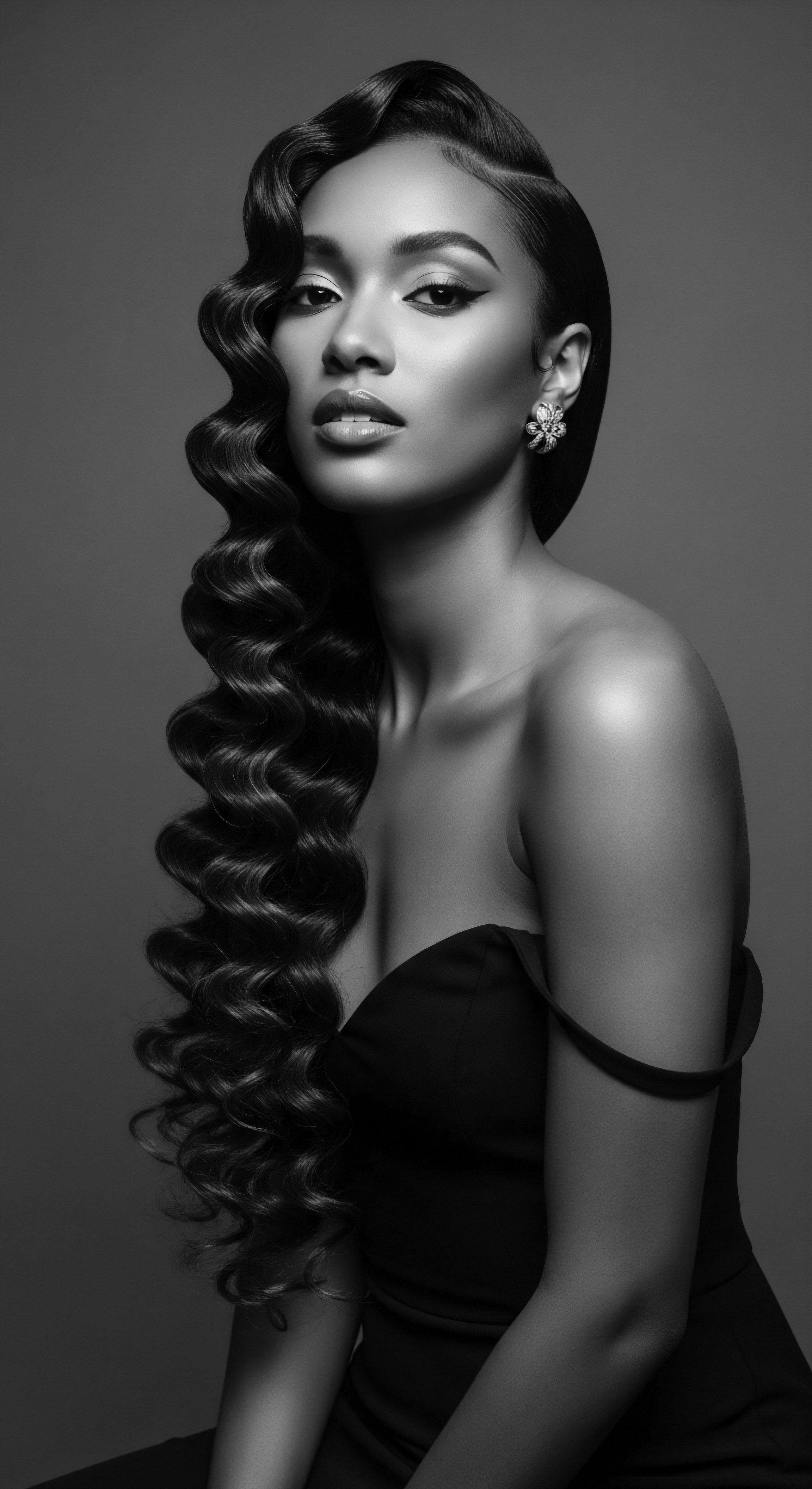
Fundamentals
The concept of Medieval Nubian Hair reaches far beyond a simple description of texture or style; it represents a profound understanding of hair as a living chronicle, a physical manifestation of heritage, identity, and ancestral wisdom. It refers to the rich and diverse expressions of hair, its forms, and the intricate care practices observed by the peoples inhabiting the ancient Nubian region during the medieval period, approximately from the 6th to the 15th centuries of the Common Era. This era witnessed a flourishing of Christian kingdoms in Nubia, particularly Makuria, Nobatia, and Alodia, marking a distinct phase in a civilization with roots stretching back millennia along the fertile banks of the Nile. To truly grasp its import, one must view Medieval Nubian Hair as a reflection of a people’s enduring connection to their past and a testament to their sophisticated cultural practices.
At its fundamental level, Medieval Nubian Hair encompassed a spectrum of natural hair textures characteristic of indigenous African populations. Historical and archaeological accounts, including depictions in art from the New Kingdom of Egypt, frequently portray Nubians with Curly or Tufted Hair. This inherent texture, shaped by the elliptical and curved cross-sections of the hair shaft common in Afro-textured hair, dictated many of the traditional styling and care methods developed over generations. The dry, arid environment of the Nile Valley, while challenging, also played a surprising role in preserving organic materials, including hair and textiles, offering invaluable insights into these ancient practices.
Medieval Nubian Hair embodies the rich tapestry of ancestral practices and cultural significance, marking a profound connection to Black and mixed-race hair heritage.
Beyond its biological form, Medieval Nubian Hair served as a powerful visual language within Nubian society. Hairstyle could readily convey information about an individual’s Age, Marital Status, Social Standing, and Even Their Religious Affiliation. This deep connection to personal and communal identity meant that hair care was never a superficial act.
Instead, it was a ritual, a communal gathering, and a continuous thread woven into the fabric of daily life. The processes of braiding, coiling, and adorning hair were not merely about aesthetics; they were acts of storytelling, knowledge transfer, and communal bonding.
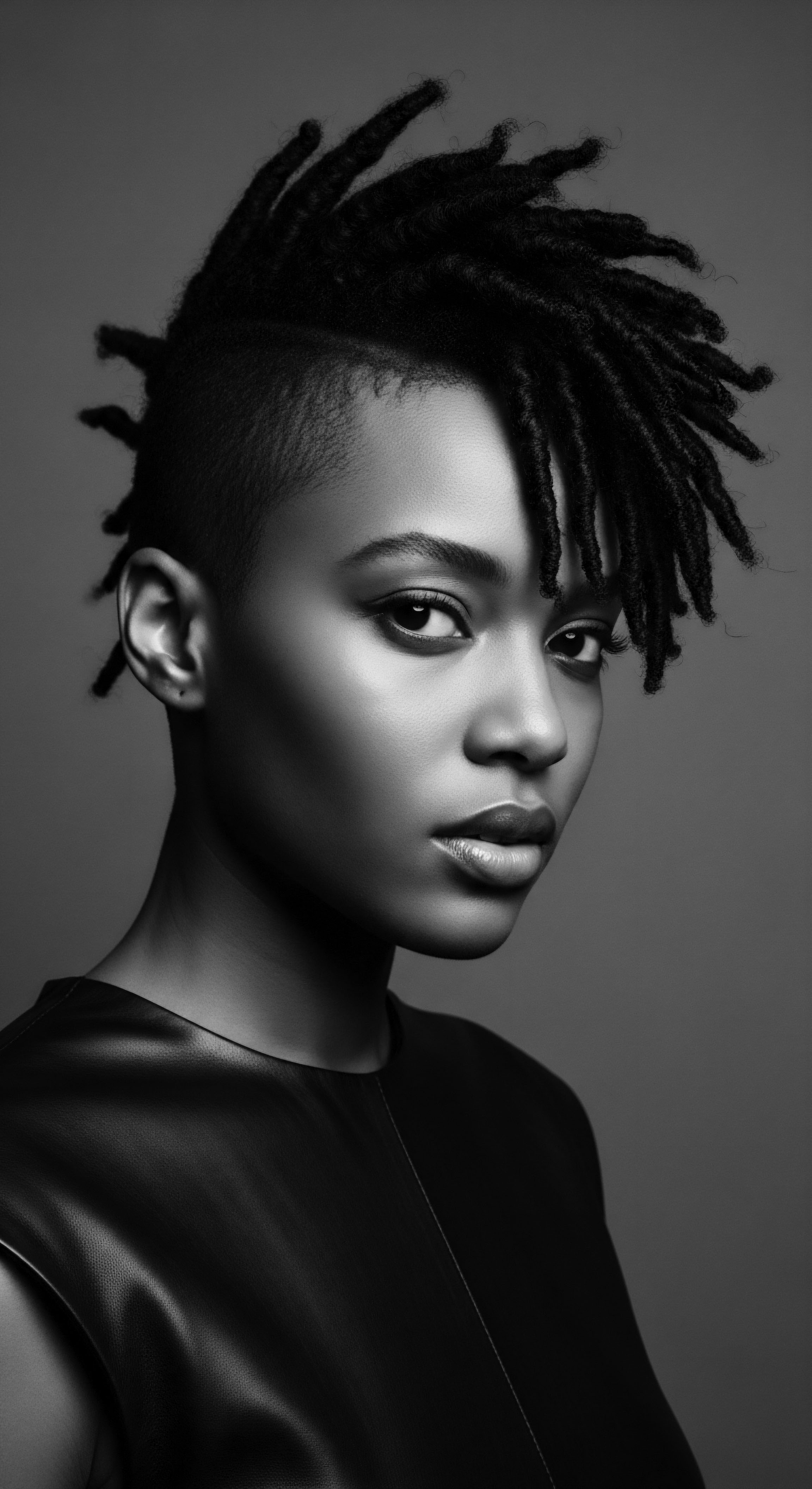
Early Care Practices and Tools
The meticulous care for Medieval Nubian Hair involved a rich array of natural ingredients and purpose-designed tools, passed down through generations. Ancient Nubian communities relied on resources readily available from their environment. Natural butters, various herbs, and finely ground powders were commonly used to maintain moisture and promote hair health.
While direct archaeological evidence for all specific medieval Nubian hair products remains under ongoing investigation, historical parallels from broader African hair care traditions offer compelling insights. For instance, the traditional Sudanese Karkar oil, a concoction often incorporating sesame oil, honey wax, and animal fat, stands as a testament to long-standing practices aimed at nourishing and revitalizing hair and scalp.
The tools employed in the care and styling of Medieval Nubian Hair also speak volumes about their ingenuity. Archaeological findings from ancient Sudan and Egypt reveal the presence of Hair Combs Dating Back over 6,000 Years, often carved from bone or hippopotamus ivory, sometimes adorned with animal motifs. These implements were not merely functional objects; they were often found in cemeteries and tombs, suggesting their significance extended beyond daily grooming into symbolic realms. Their small size has led some experts to consider they may have also functioned as decorative objects or miniature representations for funerary use.
- Mushat Plaits ❉ A fine plaited style often adorned with beads and jewels, symbolizing northern Sudanese beauty canons.
- Rasha Style ❉ A plaited style worn in riverain Sudan, similar in appearance to ancient Egyptian depictions of slave and dancing girls.
- Hair Threading ❉ An ancient technique involving wrapping hair with threads, promoting length retention and serving as a protective style.
The foundational understanding of Medieval Nubian Hair, therefore, begins with acknowledging its inherent biological qualities and recognizing the deeply ingrained cultural practices and profound communal meanings that transformed mere strands into powerful expressions of a people’s living heritage.
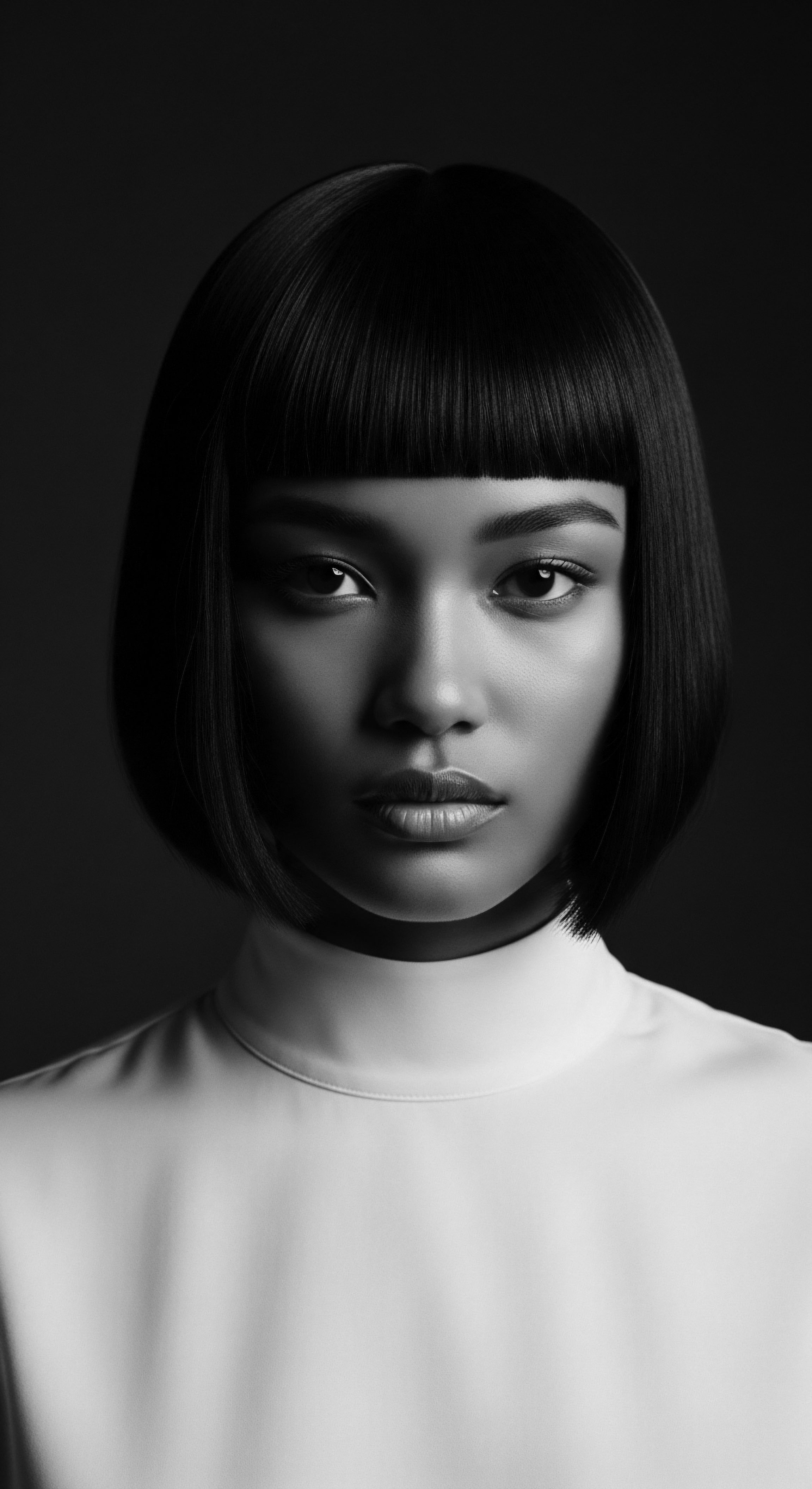
Intermediate
Advancing our appreciation of Medieval Nubian Hair requires a deeper exploration into its biological specificities, the intricate choreography of traditional care, and its layered significance within Nubian social structures. The inherent qualities of hair, such as its shape and composition, provided the biological canvas upon which cultural expression unfolded. Hair strands, composed primarily of keratin protein, exhibit structural differences among various human populations.
For individuals of African descent, including the ancient Nubians, hair shafts are typically more elliptical and curved, leading to a tighter curl pattern compared to other hair types. This unique structure results in hair that is often drier due to the challenges of natural sebum distribution along the curved shaft and more prone to breakage if not carefully managed.
The Medieval Nubian understanding of hair care was, therefore, intimately attuned to these intrinsic characteristics. Their practices, honed over centuries, focused on moisture retention, protective styling, and gentle handling to counteract the hair’s natural tendencies toward dryness and fragility. This holistic approach viewed hair health as an integral part of overall well-being, an insight that modern wellness advocates resonate with deeply. The continued presence of practices like African hair threading, known for its ability to promote length retention and safeguard hair from breakage, underscores the enduring wisdom of these ancestral methods.

The Tender Thread of Care and Community
The daily and ceremonial maintenance of Medieval Nubian Hair was a cornerstone of community life, transcending mere grooming to become a cherished social ritual. The time-consuming nature of intricate braiding, for instance, often stretching over hours or even days, naturally fostered environments for social interaction and bonding. Women would gather, exchanging news, wisdom, and advice as stylists rhythmically worked their fingers through hair, reinforcing community ties. This communal aspect of hair care created spaces where heritage was verbally transmitted and deeply felt.
One particularly potent example of this communal artistry can be seen in the historical role of the mushatah, or traditional hair braider, in northern Sudanese cultural life. These skilled individuals were not merely stylists; they were custodians of cultural knowledge, facilitators of social connection, and artists whose hands wove narratives into every strand. The mushat plaits, a fine braided style, became a symbol of northern Sudanese beauty, subtly complementing attire like the tobe, where its glimpse could communicate a woman’s refinement and status. Such intricate styles were often restyled periodically—fine plaits every three months, thicker ones monthly—demonstrating sustained dedication to hair presentation and its underlying cultural message.
The communal act of hair styling in Medieval Nubia fostered intergenerational wisdom, transforming a grooming ritual into a vibrant social archive.
Consider the profound connection to heritage found in traditional African hair care philosophies. Unlike some contemporary views that prioritize immediate aesthetic outcomes, ancestral practices, such as those found in Medieval Nubia, placed significant value on the longevity and intrinsic health of the hair. This was achieved through consistent application of natural emollients and through protective styling that minimized manipulation and environmental exposure.
The Himba tribe of Namibia, for example, have long coated their hair in a mixture of ground ochre, goat hair, and butter, resulting in thick, robust locks that defy Western notions of “health” while demonstrating remarkable length retention. This practice, though from a different cultural context, mirrors the ancestral emphasis on nourishing and preserving hair in ways that align with its natural texture and strength, rather than seeking to alter it fundamentally.
The table below highlights some key traditional ingredients and their applications, reflecting a continuity of care principles that would have resonated within Medieval Nubian hair practices:
| Element (Traditional Name/Source) Karkar Oil (Sudanese Origin) |
| Primary Benefit for Hair Moisture retention, scalp health, strengthening |
| Cultural/Historical Application Used for centuries to nourish hair, often incorporating sesame oil, honey wax, and animal fat. |
| Element (Traditional Name/Source) Shea Butter (West African Origin) |
| Primary Benefit for Hair Emollient, sealant, protective barrier |
| Cultural/Historical Application Widely used across Africa for moisturizing and making intricate styles, essential for managing textured hair. |
| Element (Traditional Name/Source) Natural Clays/Ochre (e.g. Himba Tribe) |
| Primary Benefit for Hair Cleansing, conditioning, protective coating |
| Cultural/Historical Application Applied for conditioning, detangling, and as a protective layer, contributing to hair thickness and health. |
| Element (Traditional Name/Source) Herbs and Powders (Various African Origins) |
| Primary Benefit for Hair Nourishment, scalp stimulation, scenting |
| Cultural/Historical Application Integrated into butters or rinses for medicinal and aesthetic purposes, reflecting botanical wisdom. |
| Element (Traditional Name/Source) These ancestral ingredients speak to a deep, localized wisdom regarding hair care, connecting directly to the heritage of textured hair traditions. |
Medieval Nubian Hair, therefore, is not merely a historical curiosity. It stands as an ancestral blueprint for understanding and honoring textured hair, offering insights into how deep scientific understanding, born of observation and practice, can be intertwined with cultural meaning and communal well-being.

Academic
The academic delineation of Medieval Nubian Hair transcends a simple cataloging of styles, extending into a complex interdisciplinary discourse that positions it as a significant artifact of human biocultural heritage. It is best understood as the collective physical, cultural, and symbolic expression of human hair in the Nubian Nile Valley during the Christian period (approximately 550-1450 CE). This understanding synthesizes data from archaeology, physical anthropology, textile analysis, and historical linguistics, allowing for a comprehensive explication of its biological characteristics, care practices, and profound societal functions. The significance of Medieval Nubian Hair lies not just in its prevalence but in its capacity to serve as a biological and cultural archive, providing tangible evidence of ancient diets, health statuses, migration patterns, and sophisticated technological adaptations.

Echoes from the Source ❉ Biological and Material Foundations
At its core, Medieval Nubian Hair reveals the inherent biological diversity of human hair, particularly the complex structures found in Afro-textured varieties. Research indicates that the hair of individuals of African descent, including the ancestral Nubians, is characterized by its unique elliptical or flattened cross-sectional shape and often a helical twist along the shaft. This morphology contributes to tighter curls, a greater number of twists per unit length, and increased porosity, influencing how moisture is retained and how hair interacts with its environment.
Analyses of hair samples from mummified individuals at Semna South in Sudanese Nubia, for example, exhibited “curling variables intermediate between European and African samples,” coupled with a “high ratio of maximum to minimum curvature,” indicating an irregular, complex curl pattern. This biological profile, rather than being a limitation, spurred ingenious adaptations in care and styling.
The remarkable preservation of organic materials in the extreme aridity of the Nile Valley provides an unparalleled opportunity to study these ancient biological and cultural expressions directly. Unlike many regions where soft tissues degrade swiftly, Nubia offers a literal ground for archaeological exploration into hair. One illuminating instance is the discovery of Textiles Woven from Human Hair at Kulubnarti, Sudan, dating to the medieval period (A.D. 550-1450).
These findings are particularly unique in the Nile Valley archaeological record, suggesting a localized practice. While initially thought to be funerary bindings, ongoing analysis suggests these items likely had prior functions as garments or household furnishings, only later repurposed for burial. This demonstrates not only the ingenuity of ancient Nubian communities in utilizing every available resource but also underscores the inherent value placed on human hair as a fiber. The precise manufacturing of these textiles, involving twisting hair into yarn, setting up a loom, and weaving, indicates a skilled and intentional process. This case study provides a powerful testament to the tangible ways in which hair was integrated into the material culture of medieval Nubia, reflecting resourcefulness and a deep understanding of natural fibers.
Beyond its use in textiles, hair itself serves as a repository of biological information. A landmark study successfully reconstructed genome-wide data from the naturally mummified hair of a 4000-Year-Old Individual from Sudan, after attempts to extract DNA from skeletal remains failed. This research revealed the genome was genetically indistinguishable from early Neolithic Eastern African pastoralists located 2500 kilometers away, providing significant evidence for southward dispersal models of Middle Nile Valley populations.
This specific example powerfully illustrates the biological archive that hair represents, offering direct, unique data points on ancient population movements and genetic heritage that other biological samples could not provide. The study highlighted the immense value of mummified hair as an alternative source of ancient DNA, particularly in environments where bone preservation is poor.
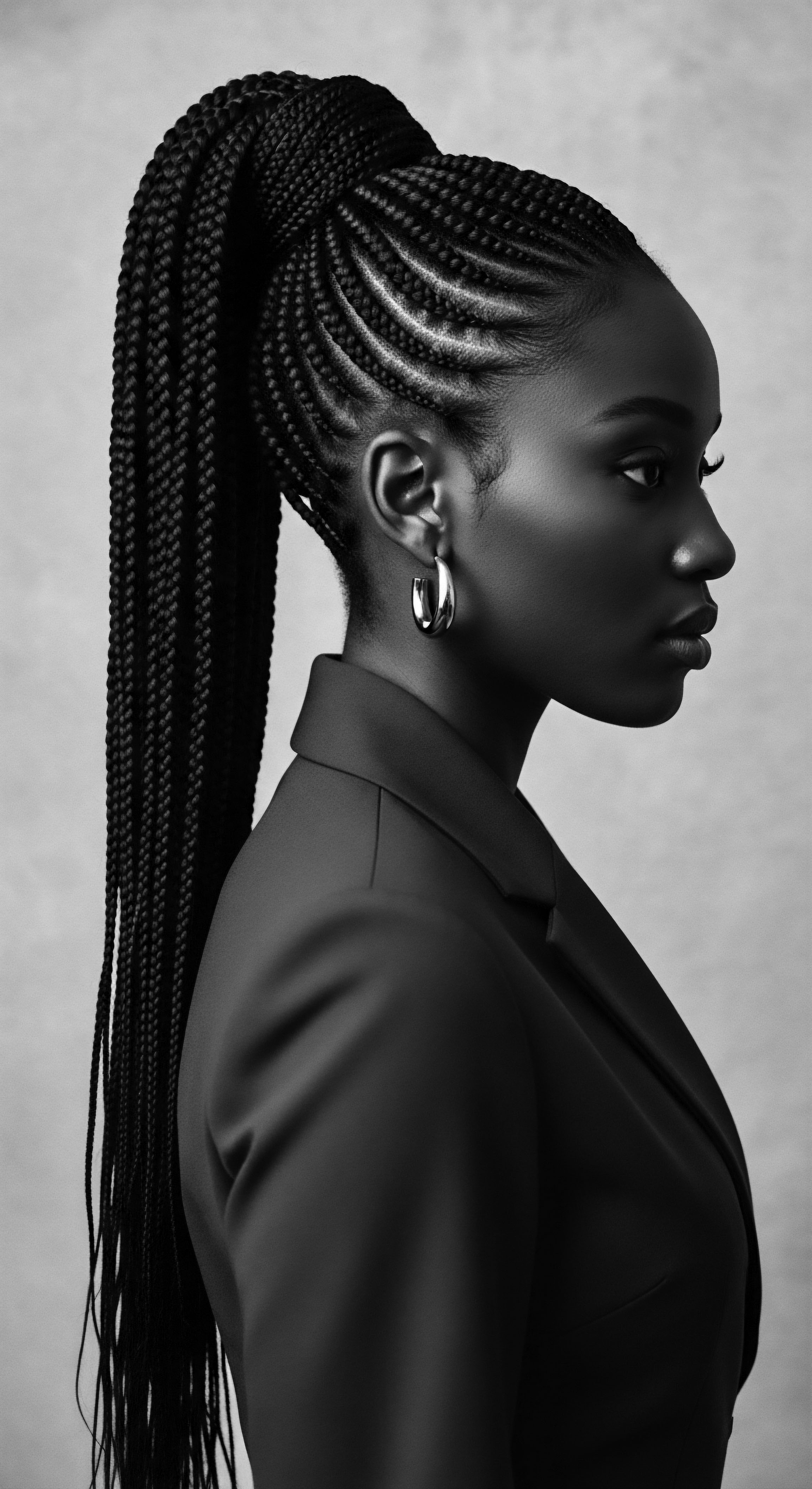
Elemental Composition and Dietary Insights
Further scientific inquiry into Medieval Nubian Hair extends to its elemental composition. Research on 168 mummified individuals from cemeteries at Kulubnarti (A.D. 550-1450) analyzed concentrations of various elements, including calcium, magnesium, strontium, manganese, zinc, iron, and copper, through inductively coupled plasma emission spectrometry. The finding that “elemental hair concentrations from this population reflect chiefly biogenic processes” offers a direct window into the diets and physiological well-being of these ancient people.
The varying levels of elements like magnesium, calcium, and strontium may correlate with dietary factors such as vegetation intake and bone remodeling, while the relationship between iron and zinc could speak to their competitive absorption in the body. This level of chemical analysis provides concrete, scientifically backed insights into the daily lives and nutritional landscape of Medieval Nubian populations, grounding our understanding of their existence in empirical data.
Hair from ancient Nubia serves as a direct biological archive, revealing insights into ancestral diets and population movements through elemental and genetic analysis.
The sophisticated nature of Nubian hair care practices, from preparing Karkar oil with precise blending methods involving sesame oil, honey wax, and animal fat, to the communal rituals of styling, suggests an empirical understanding of hair biology. These traditional methods, often perceived as merely anecdotal, often align with modern scientific principles of moisture retention, protein balance, and mechanical protection that are crucial for maintaining textured hair health. The very persistence of such practices for millennia across various African communities—many centuries-old hair care methods using raw butters, oils, and animal fats are still employed today—underscores their efficacy and inherent wisdom. The “Fashioning Sudan project,” for example, aims to reconstruct narratives of identity through archaeological and historical sources, focusing on “soft dimensions” like hair ornamentation and dress practices, acknowledging their role as powerful non-verbal communication within communities.
The following points summarize key scientific perspectives on Afro-textured hair, providing a framework for understanding Medieval Nubian Hair:
- Follicle Shape ❉ The distinct elliptical and curved shapes of hair follicles in Afro-textured hair contribute to its unique curl patterns.
- Keratin Structure ❉ The arrangement and bonding of amino acids in the keratin protein influence the hair’s tendency to bend and coil.
- Moisture Distribution ❉ The coiled structure often makes natural sebum distribution challenging, necessitating external moisturizing practices.
- Breakage Vulnerability ❉ The numerous bends and twists in the hair shaft create points of weakness, making protective styling essential for length retention.
The table below provides a comparison of how scientific inquiry affirms or expands upon ancestral Nubian hair knowledge:
| Ancestral Practice/Observation Use of oils/butters (e.g. Karkar) for sheen and pliability |
| Modern Scientific Corroboration/Explanation Lipids act as emollients and sealants, reducing transepidermal water loss from the scalp and hair, thereby improving flexibility. |
| Ancestral Practice/Observation Emphasis on protective styling (braids, twists) |
| Modern Scientific Corroboration/Explanation Reduces mechanical friction, minimizes environmental exposure, and prevents breakage at vulnerable points of the hair shaft. |
| Ancestral Practice/Observation Communal hair care rituals |
| Modern Scientific Corroboration/Explanation Recognizes the psychosocial benefits of shared experiences, reinforcing social bonds and intergenerational knowledge transfer, impacting mental wellness. |
| Ancestral Practice/Observation Hair as a biological marker of status and identity |
| Modern Scientific Corroboration/Explanation DNA analysis from ancient hair can trace genetic lineage and population movements, validating historical demographic claims. |
| Ancestral Practice/Observation The enduring legacy of Medieval Nubian hair care practices underscores a deep, intuitive understanding of hair biology that modern science is only now fully elucidating. |
In academic terms, Medieval Nubian Hair represents a vibrant case study of how human biological traits interact with cultural innovation and environmental adaptation. It stands as a powerful reminder that complex societies developed sophisticated systems for self-expression and care, often drawing from deep reservoirs of observation and empirical knowledge. The ongoing archaeological and scientific analyses of hair and related artifacts from this period continue to redefine our understanding of these ancient African civilizations, ensuring that their legacy, rooted in textured hair heritage, remains a living, breathing archive.

Reflection on the Heritage of Medieval Nubian Hair
The journey through the intricate world of Medieval Nubian Hair is far more than an academic exercise; it is an invitation to connect with the deep, resonant echoes of ancestral wisdom that continue to shape the textured hair experience today. We have traced its journey from the elemental biology of the hair strand itself, through the nurturing hands of community, to its profound role in voicing identity across centuries. The very existence of hair textiles woven from human hair at Kulubnarti and the successful extraction of 4000-year-old DNA from Nubian hair serve as powerful, tangible testaments to the enduring legacy of this heritage. These discoveries are not simply relics of a distant past; they are living testaments, affirming the resilience, ingenuity, and inherent value of textured hair.
The Medieval Nubian approach to hair care, grounded in natural ingredients and communal rituals, holds profound relevance for contemporary Black and mixed-race hair experiences. Their practices, whether through the use of nourishing oils like Karkar or the protective artistry of braids and threading, were intuitively aligned with the specific needs of textured hair. This deep historical understanding reminds us that effective hair care does not require modern inventions alone; often, it finds its true efficacy in ancient wisdom and practices passed down through generations. Honoring this lineage means recognizing that the struggle for acceptance and celebration of textured hair today is deeply intertwined with the historical narratives of strength, beauty, and cultural autonomy.
The “Soul of a Strand” ethos resonates deeply with the story of Medieval Nubian Hair. Each coil, each braid, each historical practice, carries within it the spiritual and cultural narratives of a people who understood their hair as an extension of their very being. It was a canvas for communication, a medium for communal bonding, and a symbol of unwavering identity in the face of shifting empires and changing times.
As we continue to navigate modern conversations around hair discrimination, beauty standards, and self-acceptance, the profound heritage of Medieval Nubian Hair offers a guiding light—a reminder that authenticity, rooted in ancestral knowledge, is a source of immense power and beauty. The enduring presence of textured hair is a living, breathing legacy, a testament to the unbroken thread of heritage that continues to inspire and sustain us.
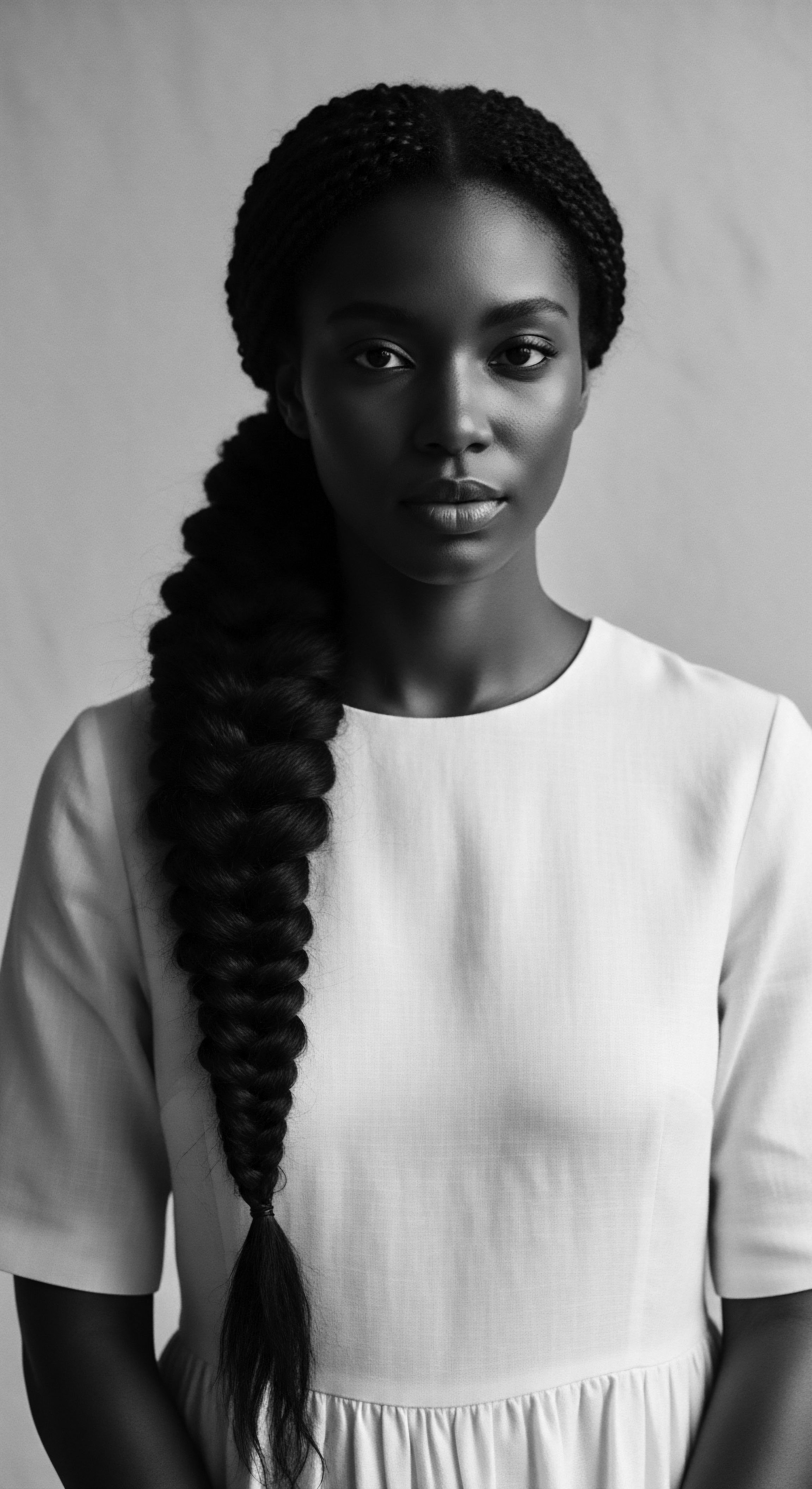
References
- Adams, W. Y. (1999). Kulubnarti III ❉ The Cemeteries. University of Kentucky Press.
- Adams, W. Y. (2004). Kulubnarti V ❉ The Textiles. University of Kentucky Press.
- Anderson, J. R. & Harrison, A. (2014). Some unique medieval Nubian textiles in the British Museum collections. Aegyptus et Nubia Christiana, 333-341.
- Bergman, I. (1975). Late Nubian Textiles. Scandinavian Joint Expedition to Sudanese Nubia Publications, Vol. 8. Scandinavian University Books.
- Byrd, A. & Tharps, L. L. (2001). Hair Story ❉ Untangling the Roots of Black Hair in America. St. Martin’s Press.
- Hrdy, D. B. (1978). Analysis of hair samples of mummies from Semma South (Sudanese Nubia). American Journal of Physical Anthropology, 49(2), 277-282.
- Jacobs-Huey, L. (2006). From the Kitchen to the Salon ❉ The Social History of Black Hair Care in America. University of North Carolina Press.
- Sandford, M. K. (1984). Multivariate analysis of elemental hair concentrations from a medieval Nubian population. University of Colorado Boulder.
- Sandford, M. K. & Kissling, M. (1993). Multivariate analyses of elemental hair concentrations from a medieval Nubian population. American Journal of Physical Anthropology, 91(4), 481-496.
- Sherrow, V. (2023). Encyclopedia of Hair ❉ A Cultural History. Greenwood Press.
- Wang, K. et al. (2022). 4000-year-old hair from the Middle Nile highlights unusual ancient DNA degradation pattern and a potential source of early eastern Africa pastoralists. Scientific Reports, 12(1), 21102.
